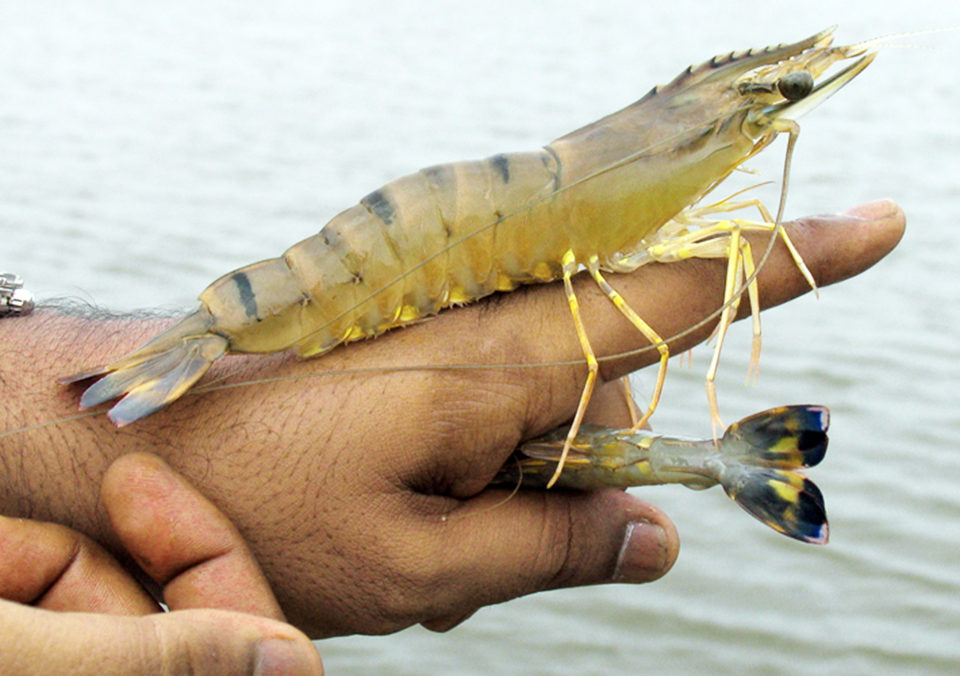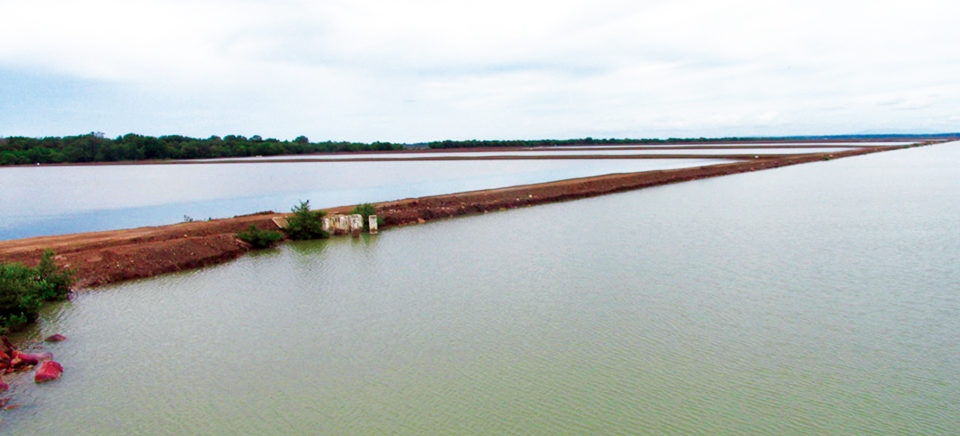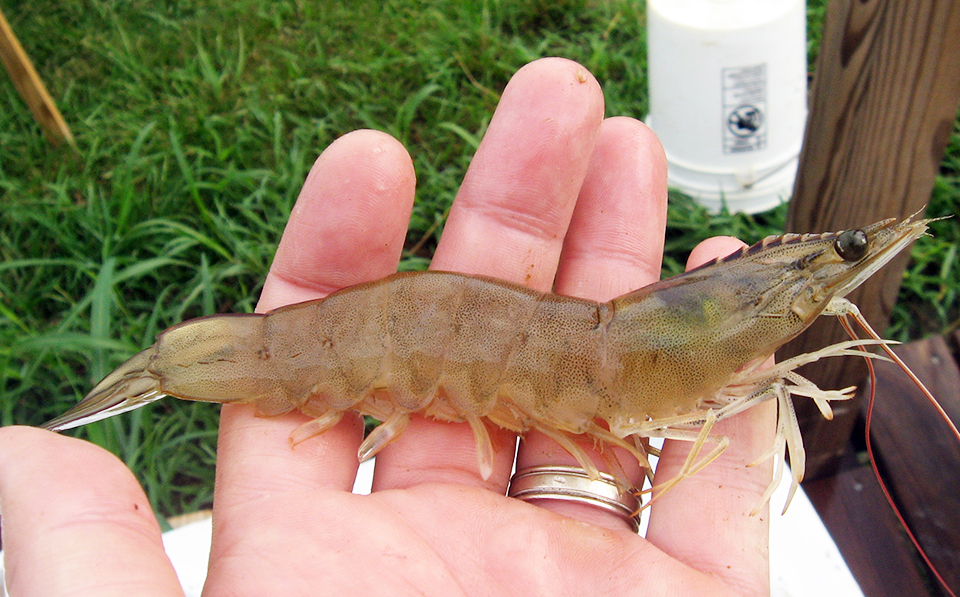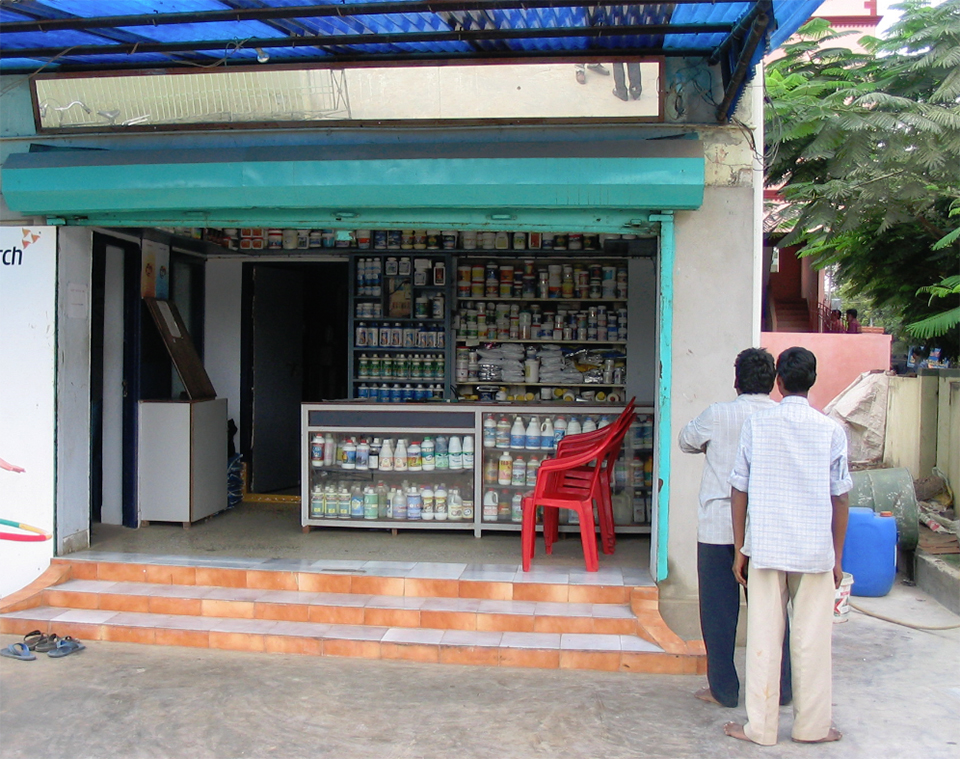Outside optimal salinity ranges, animals have higher feed-conversion ratios, slow growth rates, more stress and susceptibility to disease

Salinity in water results from the presence of dissolved ions. Eight major ions comprise most of the salinity. The positively charged ones, called cations, are calcium, magnesium, sodium, and potassium. The negatively charged ions, or anions, are chloride, sulfate, bicarbonate, and carbonate. Bicarbonate and carbonate usually are considered together, for water with pH below 8.3 does not have carbonate, and at higher pH values, some of the bicarbonate changes to carbonate.
Salinity often is reported in parts per thousand (ppt), where 1,000 milligrams per l = 1 ppt. Freshwater usually is considered to have less than 1 ppt salinity. The salinity of seawater averages 34,560 milligrams per (Table 1). The world average salinity of river water is approximately 120milligrams per l.
Boyd, Concentrations of major ions, Table 1
| Variable | Seawater (mg/l) | River Water (mg/l) |
|---|---|---|
| Chloride | 19,000 | 7.8 |
| Sodium | 10,500 | 6.3 |
| Sulfate | 2,700 | 11.2 |
| Magnesium | 1,350 | 4.1 |
| Calcium | 400 | 15.0 |
| Potassium | 380 | 2.3 |
| Bicarbonate/carbonate | 142 | 58.0 |
| Salinity | 34,560 | 120.0 |
Measuring salinity
Salinity can be measured by determining ionic concentrations and adding their values. However, in saline waters, it usually is estimated from the relationships between salinity and density, electrical conductivity, or refractive index.
There also is a close relationship between chloride concentration and salinity in marine and estuarine waters. A good approximation of salinity can be obtained by multiplying chloride concentration in milligrams per liter by 1.8.
In freshwater, the total dissolved solids concentration usually provides an excellent estimate of salinity. Total dissolved solids are measured by evaporating water and weighing the residue of salts. The hydroscopic nature of salts prevents the use of this technique in saline water of medium to high salinity.
Electrical conductivity also can be used to estimate the salinity of freshwater. The variations in ionic composition in freshwater are much greater than in brackish water or seawater. Different ions contribute differently to electrical conductivity, which affects the relationship between conductivity and salinity.
Effects on aquatic organisms
Salinity has a major impact on aquatic organisms because of the relationship of salinity to osmotic pressure. Osmotic pressure is a colligative property of solutions that can be visualized by considering two solutions of different salinities separated by a semipermeable membrane that allows water molecules to pass between the solutions, but blocks ions and other solutes.
On the side of the membrane facing the more concentrated solution, the membrane is struck by more solute particles than on the other side. Thus, more water molecules pass from the dilute solution to the concentrated solution than in the other direction. The net movement of water molecules to the less concentrated side continues until the two solutions have equal concentrations of ions.
Consider that a piston could be placed above the concentrated solution and enough pressure applied to stop the movement of water to the concentrated side. This pressure would equal the osmotic pressure of the solution, which also can be calculated for the concentration of the solute.
Aquatic animals’ outer surfaces can be thought of as semipermeable membranes between their body fluids and the external environment. Body fluids have salt concentrations of around 9,000 milligrams per liter. Thus, the fluids of freshwater aquatic animals usually are more concentrated in ions and other particles than the surrounding water. When water enters the animals, they must excrete water and retain ions and other particles to maintain their normal internal pressure.
Marine organisms have lower concentrations of ions in their body fluids than occur in seawater. Thus, they lose water to the outside, and must take in water and excrete ions to maintain normal internal pressure.
When freshwater fish are exposed to increasing salinity, they must use energy to take in water and excrete ions. Since this energy must be deducted from that derived from the food they consume, less energy will be available for growth and other purposes. Likewise, when marine organisms are placed in low-salinity water, they use additional energy to compensate for the lower concentrations of ions in the water surrounding them.

Aquaculture relevance
Aquaculture species are adapted to certain optimal salinity ranges. Outside these ranges, they have greater feed-conversion ratios, grow at slower rates, become stressed and susceptible to disease, or even die. The relationship between salinity and the recovery of food energy in growth for common carp is illustrated in Table 2.
Boyd, Effect of salinity on utilization of food energy, Table 2
| Salinity (ppt) | Food Energy Recovered As Fish Growth (%) |
|---|---|
| 0.5 | 33.4 |
| 2.5 | 31.8 |
| 4.5 | 22.2 |
| 6.5 | 20.1 |
| 8.5 | 10.4 |
| 10.5 | -1.0 |
Some species can adapt to wider ranges in salinity than others. Marine shrimp are particularly tolerant of varying salinity. For example, Litopenaeus vannamei and Penaeus monodon are cultured in waters ranging from 1 ppt to more than 40 ppt. However, extreme salinities are stressful, and shrimp culture is less problematic at salinities above 5 ppt and below 40 ppt. Extreme salinities are especially stressful when temperatures also are extreme.
Shrimp farms in estuaries often have wide seasonal variations in salinity. During the rainy season, salinity can fall drastically, while during the dry season, salinities may exceed those of ocean water.
Inland regions
There currently is considerable interest in growing marine and estuarine species in low-salinity water in inland regions. For species such as striped bass, the salinity of water has been increased by adding rock salt to freshwater ponds. In Thailand, brine solution of 100 to 200 ppt salinity from coastal evaporation has been placed in freshwater ponds to raise salinity and allow marine shrimp culture. In some other places, groundwater or surface water with adequate salinity is available.
Although these waters have adequate salinity, imbalances among their major ions can affect the growth and survival of fish and shrimp. The most notable problem has been low potassium concentration. This issue has been overcome by applying potassium chloride to provide a potassium concentration equal to 10 times the salinity. Low magnesium concentrations can also negatively affect the growth of culture species in low-salinity water.
In arid climates, evaporation concentrates the ions in inland pond water, which can harm culture species, especially where lined ponds are used and water is applied regularly to replace evaporation losses. I am aware of a situation where the salinity in a lined pond in a desert area rose above 5,000 milligrams per l over several years, which killed the largemouth bass stocked in the pond.
Shrimp farmers sometimes add freshwater to coastal ponds to lower salinity. Withdrawal of groundwater for this purpose is not recommended, for it can lead to salt water intrusion into the freshwater aquifer.
(Editor’s Note: This article was originally published in the September/October 2007 print edition of the Global Aquaculture Advocate.)
Now that you've reached the end of the article ...
… please consider supporting GSA’s mission to advance responsible seafood practices through education, advocacy and third-party assurances. The Advocate aims to document the evolution of responsible seafood practices and share the expansive knowledge of our vast network of contributors.
By becoming a Global Seafood Alliance member, you’re ensuring that all of the pre-competitive work we do through member benefits, resources and events can continue. Individual membership costs just $50 a year.
Not a GSA member? Join us.
Author
-

Claude E. Boyd, Ph.D.
Department of Fisheries and Allied Aquacultures
Auburn University
Auburn, Alabama 36849 USA[117,100,101,46,110,114,117,98,117,97,64,49,101,99,100,121,111,98]
Tagged With
Related Posts

Aquafeeds
Alternatives to fishmeal perform well in low-salinity shrimp farm trial
In a white shrimp farm trial in a low-salinity environment, alternatives to fishmeal did not negatively impact the growth, survival or FCR of the shrimp.

Responsibility
A review of water quality improvement products
Prof. Boyd examines products used by aquafarmers to improve water quality and conditions in their ponds and discusses their efficacy.

Health & Welfare
Ammonia toxicity degrades animal health, growth
Ammonia nitrogen occurs in aquaculture systems as a waste product of protein metabolism by aquatic animals and degradation of organic matter, or in nitrogen fertilizers. Exposure can reduce growth and increase susceptibility to diseases in aquatic species.

Innovation & Investment
Artemia, the ‘magic powder’ fueling a multi-billion-dollar industry
Artemia, microscopic brine shrimp used as feed in hatcheries, are the unsung heroes of aquaculture. Experts say artemia is still inspiring innovation more than 50 years after initial commercialization. These creatures are much more than Sea-Monkeys.

